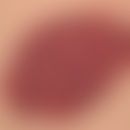Synonym(s)
DefinitionThis section has been translated automatically.
Notifiable, harmless, local infectious disease induced by contact infection with parapoxviruses (Orfvirus that affects sheep and goats) from the Poxviridae family, zooanthroponosis, with formation of inflammatory nodules at the site of infection.
PathogenThis section has been translated automatically.
Parapoxvirus (3 species):
- P. bovis 1 (in cattle, pathogen causing stomatitis papulosa)
- P. bovis 2 (in cattle: pathogen causing udder pox; in humans: milking knots)
- P. ovis, formerly known as Orf virus (in sheep, goats and chamois, pathogen of Ecthyma contagiosum).
Local infection through direct contact with the diseased animals.
You might also be interested in
ClassificationThis section has been translated automatically.
Occurrence/EpidemiologyThis section has been translated automatically.
The Orf virus is distributed worldwide. The occurrence of Orf infection in humans is rare. It is usually linked to specific occupational groups (farmers, sheep breeders, veterinarians). Incidental infections also occur in contact with infected animals (viral lesions on teats and mouths of calves/cows/sheep). An expansion of infected host animals is observed in recent years (cats,reindeer, camels). In rare cases, human-to-human transmission has occurred (Caravaglio JV et al. 2017).
LocalizationThis section has been translated automatically.
ClinicThis section has been translated automatically.
Incubation period: 3-10 days. Thereafter appearance of very characteristic skin symptoms:
- 1st week (maculopapular stage): Single or multiple, coarse, elevated, 0.5-1.5 cm large, blue-reddish papules or nodules. Regional lymphangitis and lymphadenitis possible.
- 2nd week (cockade stage): Central redness, surrounding white ring, peripheral, inflammatory reddened yard.
- 3rd week (serous exudation): Weeping surface.
- 4th week: Dry papule covered with a yellow-black crust.
- 5th week: Papillomatous transformation of the surface.
- From the 6th week: regression of the papule, rejection of the crust. Always scarless healing.
- Orf-induced erythema exsudativum multiforme is rare.
HistologyThis section has been translated automatically.
DiagnosisThis section has been translated automatically.
Virus antigen detection from efflorescence material, antibody titer determination in serum (ELISA), recall antigen testing with parapoxvirus bovis 2-antigen, electron-optical virus detection ( negative staining).
Differential diagnosisThis section has been translated automatically.
Milking knots: Analogous clinical symptomatology. Differentiation by anamnesis. Which animal contact was present?
Anthrax of the skin: very rare; rapid formation of an inflammatory nodule or pustule; rapid spread, haemorrhagic bladder; early onset of tiredness, malaise, headache with varying degrees of fever.
Granuloma teleangiectaticum: usually only solitary; histology is diagnostic
Chronic papillomatous pyoderma: purulent, painful, pathogen detection
Sporotrichosis: lymphogenically transmitted infection, multiple, less symptomatic, bluish-red nodes arranged in chains along the lymphatic pathways.
Complication(s)(associated diseasesThis section has been translated automatically.
Bacterial superinfections. Rarely is the Orf-induced erythema exsudativum multiforme.
TherapyThis section has been translated automatically.
External therapyThis section has been translated automatically.
Note(s)This section has been translated automatically.
The clinical appearance of Ecthma contagiosum (Orf) is identical to that of the milking knot (transmitted by cows), so a distinction is not necessary.
Case report(s)This section has been translated automatically.
Anamneses/findings: A 43 year old Turkish patient returned to Germany after a 4 week holiday in her Turkish home village. 2 weeks later she developed purulent nodules with an inflammatory yard on the right palm and the index finger.
Questioning revealed that she had taken part in a domestic slaughter of a sheep 14 days earlier. She had suffered slight cuts in these areas. A few days later his blisters appeared at the cuts. She also noticed a slight fever and painful lymphadenitis in her armpit.
Laboratory: BSG 30/50; CRP: 22,4mg/l (norm<5); low neutrophil leucocytosis (11.500/ml); detection of AK against parapoxviruses;
therapy: antiseptic local therapy; furthermore ciprofloxacin for 7 days because of a bacterial overlay.
LiteratureThis section has been translated automatically.
- Bodnar MG et al (2001) Facial orf. J Am Acad Dermatol 40: 815-817
- Caravaglio JV et al(2017) Orf Virus Infection in Humans: A Review With a Focus on Advances in Diagnosis and Treatment.J Drugs Dermatol16:684-689.
- Degraeve C et al (1999) Recurrent contagious ecthyma (Orf) in an immunocompromised host successfully treated with cryotherapy. Dermatology 198: 162-163
- Günes AT et al (1982) Ecthyma contagiosum epidemics in Turkey. Dermatologist 33: 384-387
- Hartmann AA, Büttner MB, Stanka F, Elsner P (1985) Sero- and immunodiagnostics in human parapox virus infection. dermatologist 36: 663-669
- Hofmann B et al (1995) Ecthyma contagiosum (Orf). Z Hautkr 70: 68-69
- Joseph RH et al (2015) Erythema multiforme after orf virus infection: a report of two cases and literature review. Epidemiol Infect 143:385-390
- Kuhl JT et al (2003) A case of human orf contracted from a deer. Cutis 71: 288-290
- Müller C (2016) Test your expertise. Act Dermatol 42: 221-223
- Nagington J et al (1965) Milker's nodule virus infections in Dorset and their similarity to orf. Nature 208: 505-507
- Rajkomar V et al (2015) A case of human to human transmission of orf between mother and child. Clin Exp Dermatol 41:60-63
- Rieger H et al (2003) Ecthyma contagiosum (Orf) as an uncommon differential diagnosis of infections of the hand. Trauma surgeon 106: 204-206
- Revenga F et al (2001) Facial orf. J Eur Acad Dermatol Venereol 15: 80-81
- Thurman RJ et al (2015) Images in clinical medicine. Contagious ecthyma. N Engl J Med 372:e12
- Torfason EG, Gunadottir S (2002) Polymerase chain reaction for laboratory diagnosis of orf virus infections. J Clin Virol 24: 79-84
Incoming links (21)
Animal owner's pox; Contagious ecthyma orf; Contagious pustular dermatitis; Contagious pustular stomatitis; Cowpox; Ecthyma infectiosum; Ekthyma; Farmyard pox; Milker calluses; Milker granuloma; ... Show allOutgoing links (12)
Anthrax of the skin; Cryosurgery; Degeneration, ballooning of the epidermis; Keratinocyte; Milking knot; Negative staining; Papel; Parapoxviruses; Poxviridae; Pyoderma; ... Show allDisclaimer
Please ask your physician for a reliable diagnosis. This website is only meant as a reference.





